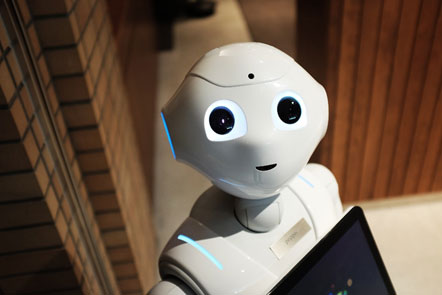
A few decades ago, machine learning and artificial intelligence (AI) were terms seen mostly in science fiction, heralding a future that we could only marvel at. However, thanks to speedy advancements in technology, the neural networks of the 1950s have quickly shifted to the deep learning networks of the present day.
Before we get into the nitty-gritty, it’s important to know that machine learning and artificial intelligence are not separate from each other. Machine learning is in fact a branch of artificial intelligence, facilitating the wide array of tasks the modern AI can accomplish.
Whether it’s creating a self-driving car or creating document capture software, both of these technologies now exhibit a strong presence in our modern world, so it’s important to understand both their capabilities and their limitations if you’re looking to integrate them into your business. To that effect, here is a breakdown of machine learning and artificial intelligence.
What is Artificial Intelligence (AI)?
Artificial intelligence is a field of computer technology, relying on techniques like deep learning and natural language processing to train these computers in pattern recognition. Much like the human brain—which relies on patterns in behaviour and data to make decisions—the goal of the AI field is to create an intelligence that can make decisions like a human.
A “weak” AI is one that can solve problems in a particular context, but nowhere else. Deep Blue, a robot developed by IBM to win at chess, is an example of one such AI. A “strong” AI is one that can be applied to any situation, which has not yet been developed.

Deep Learning and AI
Back in the 1950s, early work on “thinking machines” began with the construction of simple neural networks trained to recognise basic patterns. This work progressed into machine learning through to the 2010s, manifesting both in research and elements of society (including business and healthcare). Finally, the modern manifestation of AI relies on something called “deep learning”.
Deep learning breakthroughs drove the AI field to where it is today. Instead of relying on simple pattern recognition, artificial intelligences are constructed from artificial neural networks meant to mimic the brain. These networks are then given information and allowed to learn from it. This is how the AI develops a base of knowledge and begins to imitate the workings of the human brain when processing data.
What does AI bring to the modern world?
In today’s world, we see AI in business, healthcare, and even in-home life. Smaller intelligences like Siri and Alexa populate our smartphones, while larger ones span the Internet of Things (IoT), helping to connect devices, learn patterns in data, and automate tasks.
Every industry can benefit from AI. From manufacturing to banking, AI has the ability to enhance speed, accuracy, and customer experience in every field. It’s going to take the world somewhere entirely new (as long as we don’t accidentally invent Skynet from the Terminator).
Some ways AI is pushing the world forward include:
- Automating learning and discovery through data processing, without getting tired.
- Adding intelligence to existing products, i.e., the Internet of Things
- Adapting through progressive learning algorithms to better mirror human decision making.
- Analysing more and deeper data, faster than humans ever could.
- Achieving close to 100% accuracy in data processing and pattern recognition thanks to deep learning (e.g., bill scanning software)
- Extracting the best possible information from data, helping to create a competitive advantage for businesses using it well.
What is Machine Learning?
Machine learning is a particular branch of the AI field that focuses on pattern identification and decision making. Systems that rely on machine learning must be set up by humans and fed a pool of data. Once it has established patterns from a large enough pool, it can make decisions based on the data’s trends.

The Modern Machine
While deep learning is also a modern discipline, it does not necessarily outshine machine learning; it simply has different applications. Where deep learning pushes for more intricate decision making and wider neural networks, machine learning strives for data-based decision making that reflects the patterns in a given scope. This makes it very ideal for the business world.
A good, modern machine needs several ingredients for success, including data preparation capabilities, basic or advanced algorithms, automation and iterative processes, and scalability.
Having gained fresh momentum in the past few years, machine learning has a renewed presence in business. Particularly in the healthcare and financial sectors, administrative systems that use machine learning can remove much of the load on employees, allowing them to redistribute their efforts to more convoluted areas of the job.
Applications of Modern Machine Learning
Any industry working with a large amount of data would benefit from the presence of machine learning, and many have already begun implementing this technology to their advantage. Increased processing speed, advanced decision making, and accurate forecasting help them gain a significant edge on their competitors.
Some major industries that have made the jump in recent years include:
- Finance. In this sector, machine learning is used to identify important trends in a huge pool of data and to prevent fraud.
- Healthcare. Patient outcomes are the number one priority of health organisations, and machine learning can help assess their wellbeing in real-time. Thanks to the advent of wearable devices, patient vitals can be tracked, and red flags can be identified quickly.
- Government. With such a large pool of data at their disposal, government agencies are an ideal place for machine learning to be utilised. Mining data for insights can help these agencies identify trends that can increase efficiency and save money.
- Transportation. The transportation industry relies on accurate data. From the installation of new bus routes to changes in road usage, data dictates every decision made, and there is a lot of it to sift through. Using machine learning, the transportation industry can make routes more efficient and predict any potential problems before they occur.
Your industry can benefit from machine learning and AI. Talk to the Xtracta team about learning from your data today.
We’re the experts in automated data extraction, offering an easy way for businesses in every sector to capture accurate data and use it to optimise their operations. Find out more about how Xtracta works by talking to a member of our team today.










